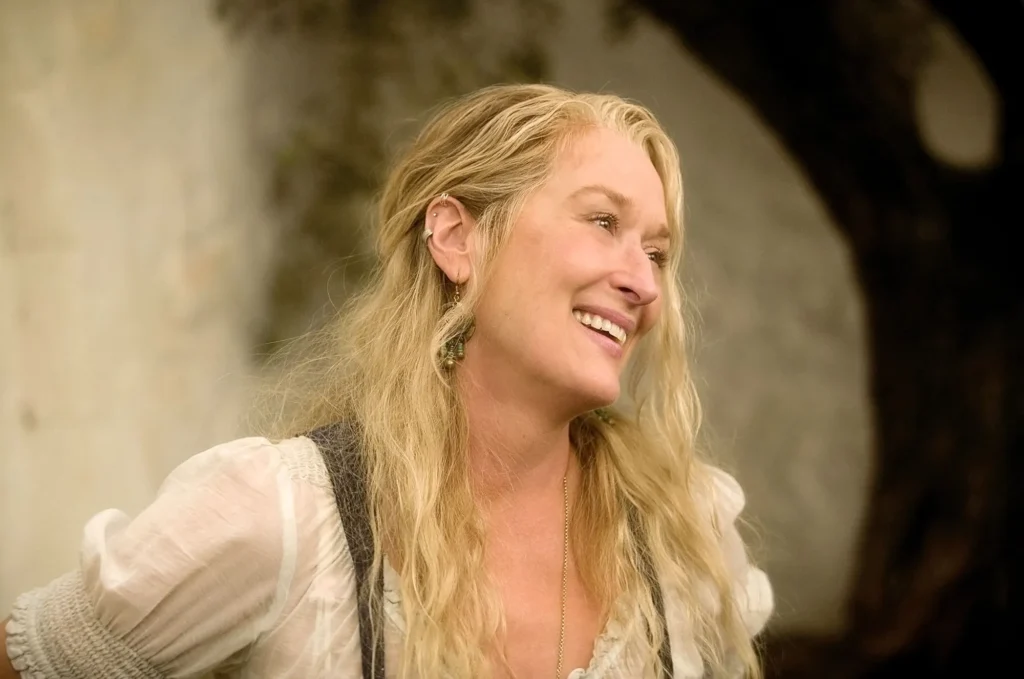Meryl Streep remains a seal of ability, commitment, and flexibility in the acting scene. Her profession, crossing north of forty years, is a demonstration of her significant effect on film and her unmatched capacity to occupy a different scope of characters. Frequently hailed as the best living entertainer, Streep’s excursion from a humble community young lady to a worldwide symbol is both rousing and wonderful.
Early Life and Instruction
Mary Louise “Meryl” Streep was brought into the world on June 22, 1949, in Culmination, New Jersey. She was the girl of Mary Wilkinson Streep, a business craftsman, and Harry William Streep Jr., a drug leader. From early on, Streep showed a distinct fascination with performing, participating in school plays, and taking drama examples.
Streep’s scholarly excursion took her to Vassar School, where she procured a BA in Show in 1971. She was then, at that point, selected at the Yale School of Show, where her thorough preparation refined her acting abilities. Her time at Yale was set apart by various shows, which established the groundwork for her future vocation in acting.
Leap forward and Ascend to Fame
Streep’s expert vocation started on the stage. She made her Broadway debut in 1975 with “Trelawny of the Wells,” which rapidly displayed her ability. Nonetheless, it was her progress in film that genuinely sent her to fame.
Her film debut came in 1977 with “Julia,” yet it was her job in “The Deer Tracker” (1978) that gathered her most memorable Foundation Grant designation. The next year, she won her most memorable Oscar for Best Supporting Entertainer for her presentation in “Kramer versus Kramer” (1979), a film that investigated the intricacies of marriage and separation.
A Profession Characterized by Variety
Streep’s profession is portrayed by her ability to strike to change into a wide cluster of characters. From verifiable figures to fictitious symbols, her exhibitions have reliably shown profundity and validness. Her depiction of Sophie Zawistowski in “Sophie’s Decision” (1982) procured her a Foundation Grant for Best Entertainer, hardening her status as a force to be reckoned with in Hollywood.
During the 1980s and 1990s, Streep kept on taking on testing jobs. She depicted Karen Silkwood in “Silkwood” (1983), a presentation that procured her one more Oscar designation. Her job in “Out of Africa” (1985), close by Robert Redford, further displayed her adaptability and drew basic recognition.
Streep’s capacity to dominate accents and exemplify characters from various foundations is especially essential. Her depiction of English Top state leader Margaret Thatcher in “The Iron Woman” (2011) is a great representation, procuring her a third Foundation Grant. Her commitment to consummating emphasizes, for example, the Clean articulation in “Sophie’s Decision” or the Danish pronunciation in “Out of Africa,” which adds a layer of legitimacy to her exhibitions.
Later Profession and Proceeded with Greatness
Indeed, even as she entered the later phases of her vocation, Streep indicated that things were not pulling back. She took on jobs in different kinds, from musicals like “Mamma Mia!” (2008) to true-to-life shows, for example, “Julie and Julia” (2009), where she depicted the notable gourmet specialist Julia Youngster.
Her presentation in “Satan Wears Prada” (2006) as the imposing style manager Miranda Holy turned into a social standard, showing her capacity to flawlessly mix parody with the show. This job brought her basic recognition as well as acquainted her with another age of fans.
Streep’s commitment to her art is apparent in her groundwork for every job. She completely explores her characters, frequently drenching herself in the verifiable and profound setting of their lives. This responsibility has gained her the appreciation of her friends and the deference of crowds around the world.
Inheritance and Impact
Meryl Streep’s impact stretches out past her noteworthy filmography. She has been a vocal backer for orientation balance in Hollywood, utilizing her foundation to take a stand in opposition to segregation and to help drive that advance variety and consideration in the business. Her discourses at grant functions frequently feature social and policy-centered issues, mirroring her obligation to having a constructive outcome off-screen too.
Streep’s heritage is likewise clear in the various honors and praises she has gotten. With 21 Foundation Grant designations and three successes, she holds the record for the most assignments by any entertainer ever. She has additionally won eight Brilliant Globe Grants and got the lofty Cecil B. DeMille Grant for lifetime accomplishment.
End
Meryl Streep’s profession is a demonstration of her remarkable ability, unfaltering commitment, and significant effect on the universe of film. Her capacity to change into a horde of characters, combined with her obligation to social issues, makes her a genuine symbol. As she keeps on taking on new jobs and motivating crowds, Streep’s inheritance as the quintessential entertainer within recent memory remains solidly settled.

